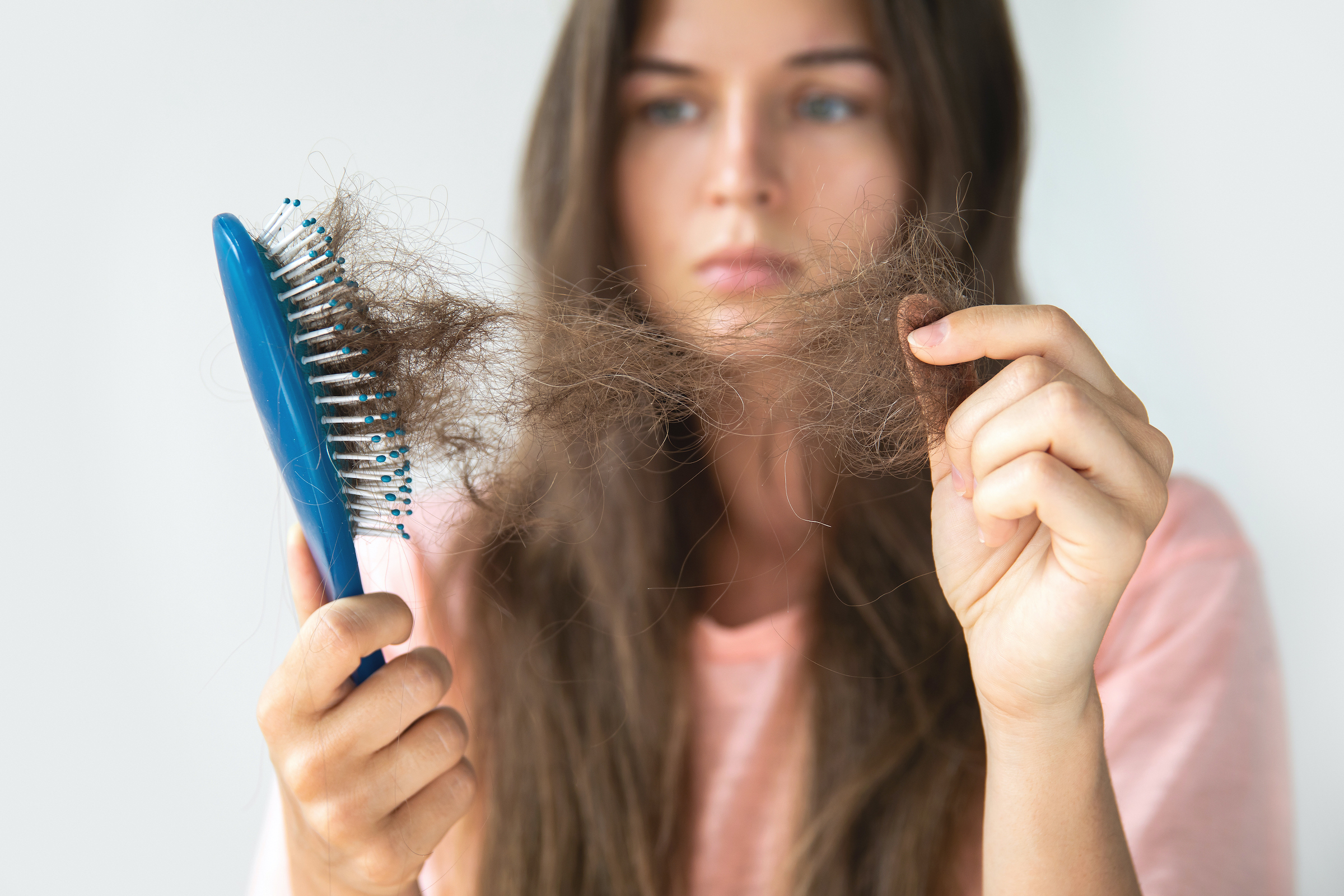Table Of Content

If you often wear your hair tightly pulled back, the continual pulling can lead to permanent hair loss. Free to everyone, these materials teach young people about common skin conditions, which can prevent misunderstanding and bullying. Both the CDC and the FDA warn against treating this common childhood condition on your own with non-prescription treatments. Your shorter hairs — like eyelashes, arm and leg hair, and eyebrows —have a short anagen phase (about one month).
Frontal fibrosing alopecia
For example, if you’re experiencing hair loss caused by an imbalance of thyroid hormones, correcting the hormonal imbalance may improve hair growth. There are several reasons why you might be losing your hair. According to Agbai, genetics, hormonal shifts, stress, underlying medical conditions, nutritional deficiencies, and scalp inflammation are notable factors.
What is hair loss in women?
Early treatment of a receding hairline (frontal fibrosing alopecia) might help avoid significant permanent baldness. The cause of this condition is unknown, but it primarily affects older women. In the type of patchy hair loss known as alopecia areata, hair loss occurs suddenly and usually starts with one or more circular bald patches that may overlap. If your hair is falling out more than normal, it's important to determine the cause; in some cases, you may need a blood test or other tests.
Can Retinol Help With Hair Loss? - InStyle
Can Retinol Help With Hair Loss?.
Posted: Mon, 15 Apr 2024 07:00:00 GMT [source]
Onion Juice Treatment for Hair Growth:
Hair loss may affect the scalp, pubic hair, arm and leg hair, eyebrows, and eyelashes. Losing hair follicles is a normal part of the hair growth cycle. In their final, full-grown phase—the telogen phase—hair follicles stay dormant for up to three months, falling off when new hair starts to grow. Hair loss occurs when something disrupts this cycle, and hair follicles stop regrowing.
Other Conditions
More research is needed before definitive claims can be made regarding its effectiveness. Female pattern baldness often results in thinning all over the scalp and might look like widening or thinning around the part. It typically occurs after age 65 but, for some females, it can begin early in their lives. Anagen effluvium causes large amounts of hair to rapidly fall out during the anagen (growth) phase of the hair cycle.
A lack of access to food, dietary imbalances, eating disorders, or digestive conditions are some potential causes. If your blood test reveals that you’re not getting enough biotin, iron, or zinc, your dermatologist may recommend taking a supplement. If you’re not getting enough protein, your dermatologist can tell you how to boost your intake. More studies are needed to find out who is most likely to benefit from this treatment and whether these devices cause long-term side effects. This dermatologist is using a dermatoscope to examine a patient’s scalp. Surgical procedures to treat baldness are not usually covered by insurance.
The type and severity of hair loss you experience may determine the outcome (prognosis). Some types of hair loss are permanent, especially if you have damage to your hair follicles. For example, anagen and telogen shedding may stop with time. Managing any underlying health conditions improves hair loss. And early treatment of alopecia may reduce the speed of thinning and promote regrowth.
Your part may gradually become wider, you might see more of your scalp when your hair is pulled back, or your ponytail could be less full. Because hair is constantly falling out and growing, hair loss often goes unnoticed. You're more likely to notice it when a lot of hair enters the resting phase at the same time or if hair roots become damaged during the growth process.
Traction alopecia

They found that in the absence of circulating corticosterone, the stem cells underwent many more rounds of regeneration during the animals’ lifetime. By contrast, high levels of the hormone, as a result of chronic stress, kept them inactive for longer and led to fewer rounds of regeneration. They showed that a stress hormone called corticosterone — which is the mouse equivalent of cortisol in humans — keeps the follicle stem cells inactive. Looking at your scalp lets your doctor check for any infections or swelling and see where your hair’s falling out. It usually happens when you're in your late 50s or 60s. But you may start to notice it as early as your late teens -- and the earlier it starts, the more serious it tends to be.
Trans women and trans men who have used HRT may have additional risk factors for hair loss that are not covered here. This works well for people with inherited baldness since they typically lose hair on the top of the head. Because some hair loss can be progressive, you may need multiple procedures over time. Newer treatments that are also being explored include some forms of laser therapy, microneedling with PRP, as well as other oral medications. Many of these treatments are still in the early testing phases though, and more research will be necessary.
Infections, distressing events, high fever, and mental health issues can contribute to stress-related hair loss in men and women. Rapid weight loss due to bariatric surgery or disease can also cause this often reversible condition. This is a procedure in which your doctor removes hair from a part of your scalp where hair growth is full and implants it into an area where hair is thinning.

No comments:
Post a Comment